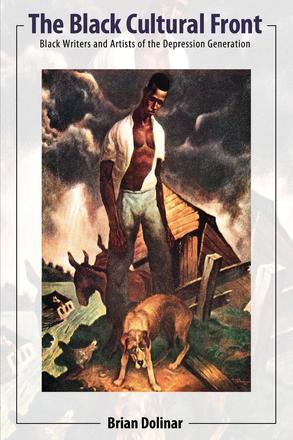
The Black Cultural Front
Black Writers and Artists of the Depression Generation
How the aftermath of the Great Depression convinced several African American writers to adopt a leftist outlook
Description
The Black Cultural Front describes how the social and political movements that grew out of the Depression facilitated the left turn of several African American artists and writers. The Communist-led John Reed Clubs brought together Black and white writers in writing collectives. The efforts of the Congress of Industrial Organizations (CIO) to recruit Black workers inspired growing interest in the labor movement. One of the most concerted efforts was made by the National Negro Congress (NNC), a coalition of civil rights and labor organizations, which held cultural panels at its national conferences, fought segregation in the culture industries, promoted cultural education, and involved writers and artists in staging mass rallies during World War II.
The formation of a black cultural front is examined by looking at the works of poet Langston Hughes, novelist Chester Himes, and cartoonist Ollie Harrington. While none of them were card-carrying members of the Communist Party, they all participated in the Left at one point in their careers. Interestingly, they all turned to creating popular culture in order to reach the black masses who were captivated by the movies, radio, newspapers, and detective novels. There are chapters on the Hughes’ “Simple” stories, Himes’ detective fiction, and Harrington’s Bootsie cartoons.
Collectively, the experience of these three figures contributes to the story of a “long” movement for African American freedom that flourished during the 1930s, 1940s, and 1950s. Yet this book also stresses the impact that McCarthyism had on dismantling the Black Left and how it affected everyone involved. Each was radicalized at a different moment and for varied reasons. Each suffered for their past allegiances, whether fleeing to the haven of the “Black Bank” in Paris or staying home and facing the House Un-American Activities Committee (HUAC). Yet the lasting influence of the Depression in their work was evident for the rest of their lives.
Reviews
"[As] Dolinar shows in a story buttressed by an array of source materials, the black reds' cultural products and political goals remained almost wholly homegrown, which is why they were consistently effective in uniting and inspiring the black public."
- John Woodford, The Black Scholar
"Brian Dolinar's The Black Cultural Front is essential reading for students and scholars of the African American Left. Deeply researched and eye-opening, Dolinar brings up challenging questions about the politics of popular culture to provide a rare, ingenious, and powerfully argued reconceptualization of the literary and artistic achievements of three major black radicals."
- Alan Wald, author of American Night: The Literary Left in the Era of the Cold War and H. Chandler Davis Collegiate Professor, University of Michigan
"Although I have been reading and researching in this field for over a decade, I found every chapter of The Black Cultural Front: Black Writers and Artists of the Depression Generation a revelation. Skillfully maneuvering between explorations of aesthetics, history, and politics, Brian Dolinar teases out the many threads that produced the specific and unique expressions of Left radicalism in the life and work of Langston Hughes, Chester Himes, and Oliver Harrington."
- Mary Helen Washington, author of The Other Blacklist: The African American Literary and Cultural Left of the 1950s